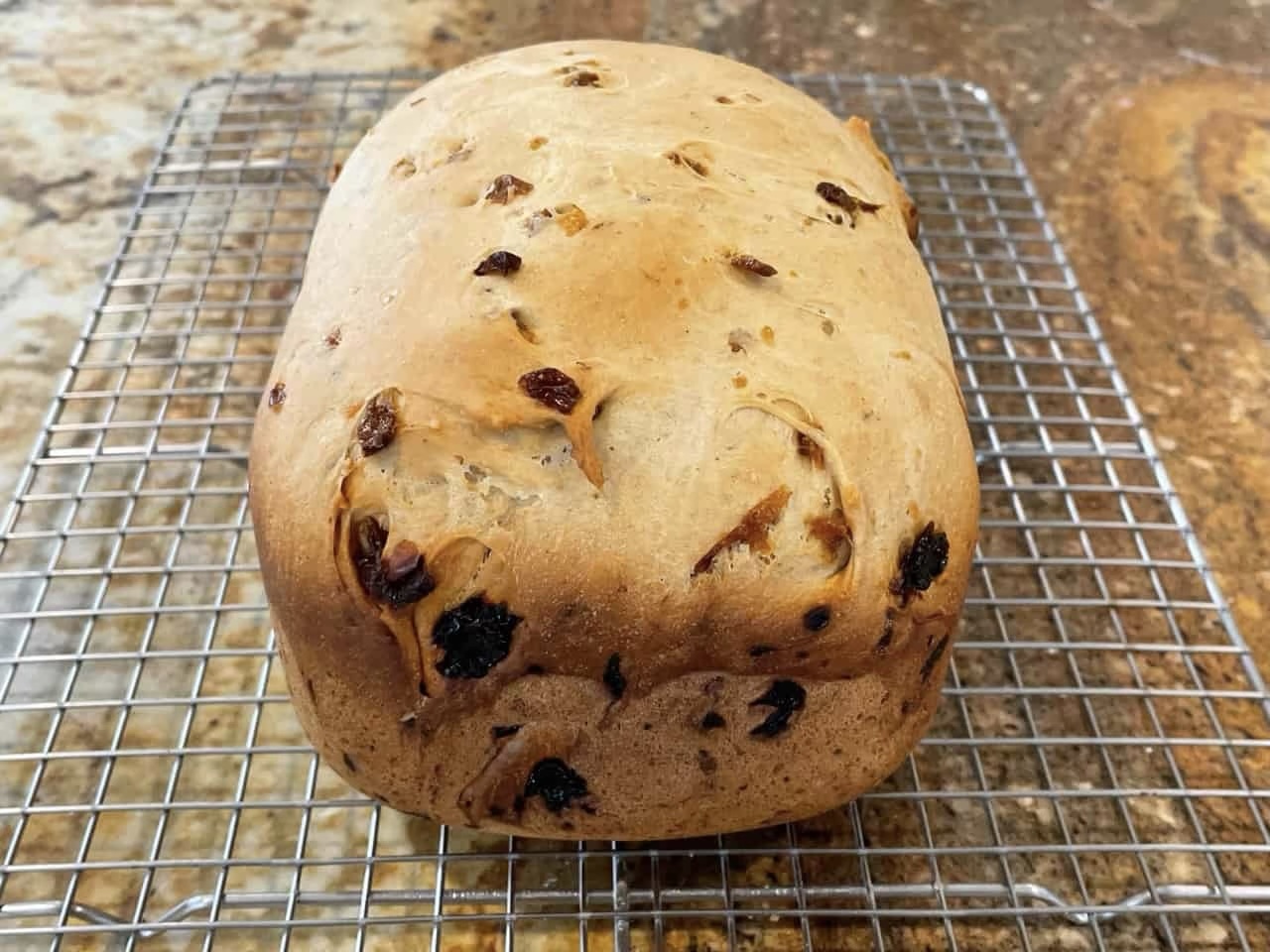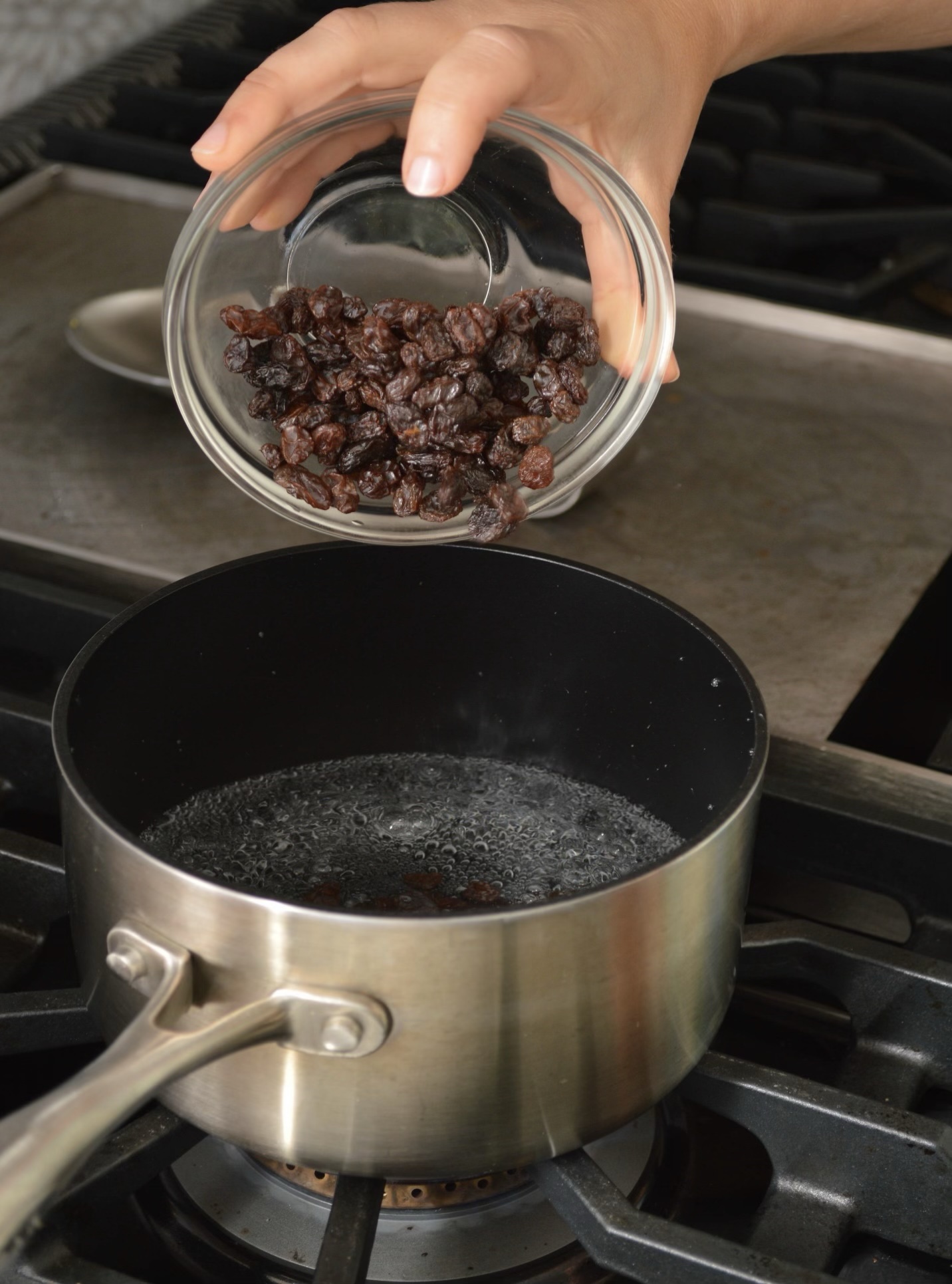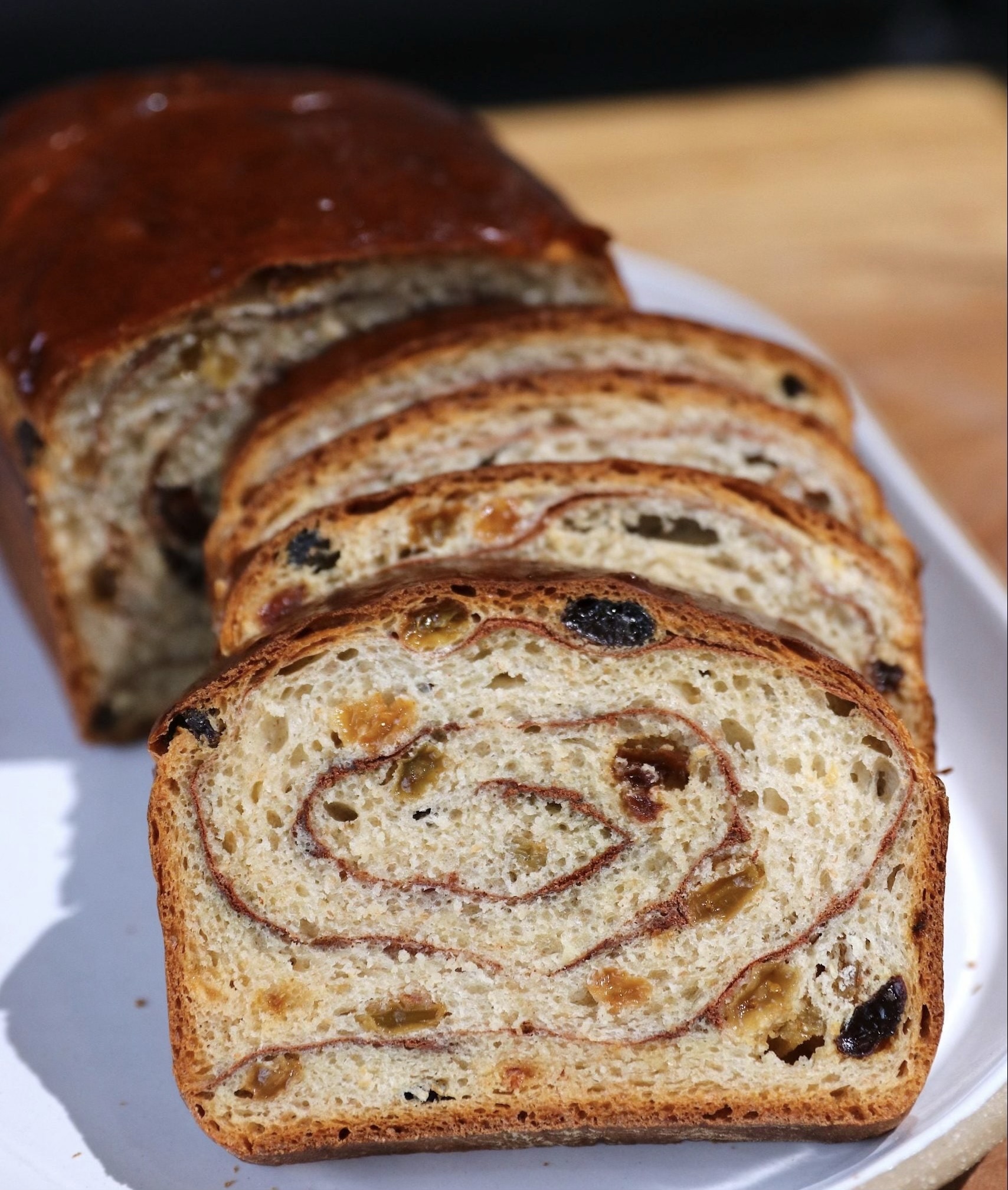A Super-Secret You Might Want to Know!
If you like to make raisin bread or sweet rolls, then this hot tip is for you! Read on to learn how to enhance the overall flavor of your dough and imbed a pleasant sweetness with one simple technique.

All raisin bread and sweet roll recipes call for some sort of liquid, be it milk, buttermilk, or water. While these liquids help the yeast to proof and create a moist dough, they don’t contribute to the recipe’s flavor or sweetness much.
Here’s where raisin water comes in. You get this from simmering a cup or two of raisins for about 20 minutes. The amount of water you use for this depends on the amount of liquid your recipe calls for.
My favorite raisin bread recipe calls for 1½ cups of milk, scalded. Instead, I mix dry powdered milk in with the dry ingredients to eliminate the scalding step. My recipe also calls for 1 cup of warm water for proofing the yeast. Instead, I skip yeast-proofing by using quick-rise yeast and mixing 2 tablespoons of these granules into the dry ingredients.

From there, I cook 1¼ cup raisins (what the recipe states) in the 2½ cups of water (the amount of liquid the recipe calls for). After 20 minutes of simmering, I drain the water off the raisins and remeasure it. Because some water evaporated off, I add however much water is needed to return the measurement to 2½ cups. After it cools down a little (so it’s warm to the touch), I mix it into my dry ingredients along with the cooked and cooled raisins and proceed kneading my dough.
What’s so great about this method is how the sweetness of the water permeates throughout the bread. You don’t just experience sweetness when you munch into a raisin, which is typical of most raisin breads. Every bite is divinely sweet and raisiny.

After so much success with my raisin bread using this technique, I decided to try it out on my sweet rolls. Same deal—raisin water replacing the liquid in the recipe. The only difference was, I didn’t add cooked raisins to the dough. I was amazed at how the dough had a delightful sweetness without any flavor of raisins. Once again, each bite of roll was pleasantly sweet. I’ve found this approach has also allowed me to use less frosting. The dough actually shines and isn’t just an attachment to the frosting.
Below you’ll find my favorite raisin bread recipe. I hope you’ll consider using powdered milk, quick-rise yeast, and trying this RAISIN-WATER technique. Then let me know what you think. This is the season for baking, and isn’t it fun to have a few super-secrets up our sleeve?
Alice's Favorite Cinnamon Raisin Bread

1 1/2 cups milk
1 cup warm water (must be between 110-115 degrees)
2 (1/4-ounce) packages active dry yeast
3 eggs
1/2 cup sugar
1 teaspoon salt
1/2 cup unsalted butter softened
1 1/4 cups raisins
8 cups all-purpose flour
2 tablespoons milk
1/2 cup sugar
3 tablespoons ground cinnamon
2 tablespoons (hefty) butter melted
Directions:
1. Warm the milk in a small sauce pan on the stove until it just starts to bubble, stirring occasionally.
2. Remove from heat.
3. Let cool until lukewarm, about 120-125 degrees.
4. Dissolve yeast in warm water and set aside until yeast is frothy, about 10 minutes or so (make sure your water is at the correct temperature or the yeast won't activate.) Then mix in eggs, sugar, butter salt and raisins (stir in the cooled milk slowly so you don't cook the eggs.) Add the flour gradually until you have a silky and soft dough.
5. Knead the dough on a lightly floured surface for a few minutes until smooth.
6. Place in a large, buttered, mixing bowl and turn to grease the surface of the dough.
7. Cover with a warm, damp cloth and let rise (I like to let my bread rise in the oven with the light on. It has just the right amount of heat and keeps the bread out of drafts.) Allow to rise until doubled, usually about 1 1/2 hours.
8. Roll out on a lightly floured surface into a large rectangle 1/2 inch thick.
9. Moisten the dough with 2 tablespoons milk and rub all over the dough with your hands.
10. Mix together Ω cup of sugar and 3 tablespoons cinnamon and sprinkle mixture evenly on top of the moistened dough.
11. Roll up tightly (the long way).
12. The roll should be about 3 inches in diameter.
13. Cut into thirds, and tuck under ends and pinch bottom together.
14. Place loaves into well-greased 9 x 5 inch pans and lightly butter tops of loaves.
15. Let rise in warm place, uncovered, again for about an hour.
16. Bake at 350 degrees for 45 minutes or until loaves are lightly browned and sound hollow when tapped.
17. Remove from oven and let cool on rack.
18. Take melted butter and spread over tops of loaves.
19. After about 20 minutes, lay loaves on their sides and remove from pans.
20. Allow to cool before slicing.
2. Remove from heat.
3. Let cool until lukewarm, about 120-125 degrees.
4. Dissolve yeast in warm water and set aside until yeast is frothy, about 10 minutes or so (make sure your water is at the correct temperature or the yeast won't activate.) Then mix in eggs, sugar, butter salt and raisins (stir in the cooled milk slowly so you don't cook the eggs.) Add the flour gradually until you have a silky and soft dough.
5. Knead the dough on a lightly floured surface for a few minutes until smooth.
6. Place in a large, buttered, mixing bowl and turn to grease the surface of the dough.
7. Cover with a warm, damp cloth and let rise (I like to let my bread rise in the oven with the light on. It has just the right amount of heat and keeps the bread out of drafts.) Allow to rise until doubled, usually about 1 1/2 hours.
8. Roll out on a lightly floured surface into a large rectangle 1/2 inch thick.
9. Moisten the dough with 2 tablespoons milk and rub all over the dough with your hands.
10. Mix together Ω cup of sugar and 3 tablespoons cinnamon and sprinkle mixture evenly on top of the moistened dough.
11. Roll up tightly (the long way).
12. The roll should be about 3 inches in diameter.
13. Cut into thirds, and tuck under ends and pinch bottom together.
14. Place loaves into well-greased 9 x 5 inch pans and lightly butter tops of loaves.
15. Let rise in warm place, uncovered, again for about an hour.
16. Bake at 350 degrees for 45 minutes or until loaves are lightly browned and sound hollow when tapped.
17. Remove from oven and let cool on rack.
18. Take melted butter and spread over tops of loaves.
19. After about 20 minutes, lay loaves on their sides and remove from pans.
20. Allow to cool before slicing.
Recipe formatted with the Cook'n Recipe Software from DVO Enterprises.
 Alice Osborne
Alice Osborne
Weekly Newsletter Contributor since 2006
Email the author! alice@dvo.com
